DIY Apple Cider Vinegar
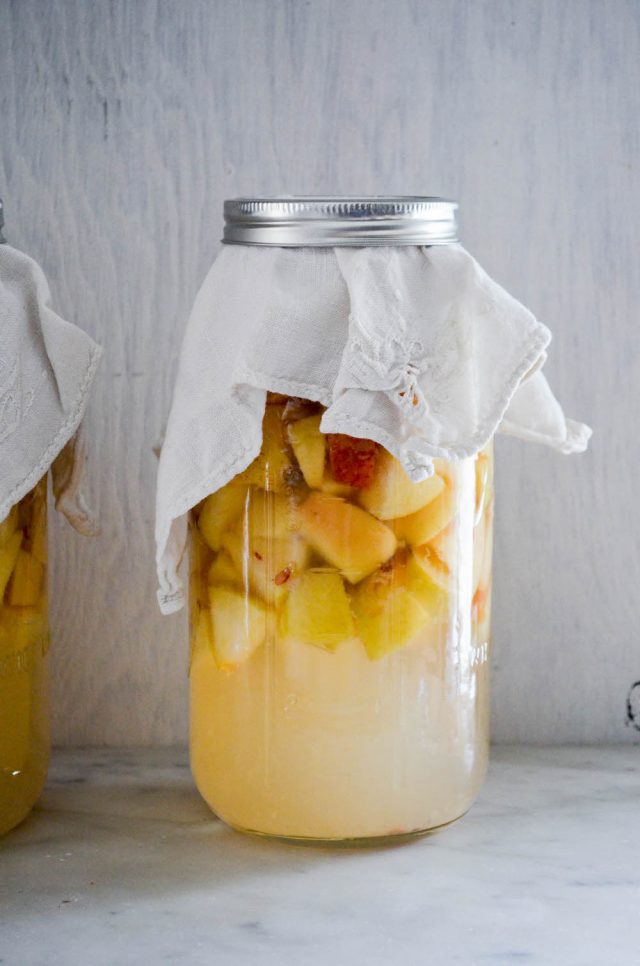
Before you say anything, I’m two steps ahead of you, listening to Michael’s laughter echo through the chambers of my mind. I know, who in their right mind makes apple cider vinegar when you can buy a jug of it for a few bucks at the grocery story?
Well, the brief answer is me. One day Michael smirked at me, and said, “when you are going to make your own water?” It took a few years after he died to make that one happen, and it was quite accidental. One of the girls had to answer a science question for school, “do water and ice weigh the same”.
Rather than have them do a Google search, I directed them to put a few ice cubes in a bag, weigh them, leave the bag out in the sun for the ice cubes to melt, and then re-weigh the bag. I love how science fits into our everyday lives, often without us really stopping to take notice. When all was said and done, I looked towards the sky, and said, “Ha, I made water, Mikey!”
And so, when I saw a post on Instagram a few weeks ago with a photo of homemade apple cider vinegar in the works, I said aloud, “wait, you can do that?” Yes, my mind was blown. It sounds amateurish to admit that, being one to make so many things from scratch. Still, the thought that I could make apple cider vinegar myself felt revolutionary, and quite fun.
You might already know this, but good quality apple cider vinegar with the “mother” can be pricey. Making it yourself is a fraction of the cost.
Apple seconds (the slightly imperfect ones) at the farm stand cost 99 cents a pound. You only need about 1 1/2 pounds of apples plus a smidge of sugar (pennies) and water (free) to make a liter of apple cider vinegar. And there’s no waste involved—you use the entire apple, peels & cores, too. Should you find yourself on an apple sauce and pie making bonanza, you can even just use cores and peels.
Intrigued, I did a little more research. The basic formula is pretty much the same—about 1 1/2 apples + 1 tablespoon of sugar + 1 cup of water to make one cup of apple cider vinegar. I decided to scale my experiment to a much larger proportion. The sugar only sounds like a lot in the recipe below. Don’t stress out, as it “cooks off” so to speak during the fermentation process. Plus, the recipe make an entire gallon, 16 cups of apple cider vinegar (don’t worry, you can scale it down, too).
Fill a jar compactly with cut up apples (or bits and bobs, peels and cores), dissolve a tiny bit of sugar into water, pour it over the apples, cover the jar with a piece of cheesecloth or fabric (I used cloth napkins) so the gasses can escape, and then wait.
So many recipes are written with just the number of apples. Maybe I’m overthinking it, but apple sizes are so varied, depending on variety and if you’re buying them from a farm stand or grocery store (try to use organic, or buy no-spray apples if possible to avoid pesticides). With that in mind, I’ve written my recipe with metric measurements. Listing “x” number of apples may sound convenient, but I prefer accuracy here.
I read on one site to keep them in a warm, dry place. I’ve never heard of keeping fermenting products in a warm spot, so went with what I know, and tucked them in the family room closet, a not too cool, not too warm, dark spot. Every few days, eager with excitement I’d check on them. When the two week mark arrived, I decided to strain them (I think they could’ve gone one more week—live and learn).
Once strained, cover the jars again with fabric, tuck them back in your cozy, dark place (um, that sounds odd), and sit back for another month. At that point you can start tasting to see if it’s reached the acidity level you prefer. I’ve not gotten to the taste test phase yet, though I did taste a spoonful just after straining out of curiosity. It was definitely shaping up to be apple cider vinegar, albeit on the weak side since it still had weeks to go.
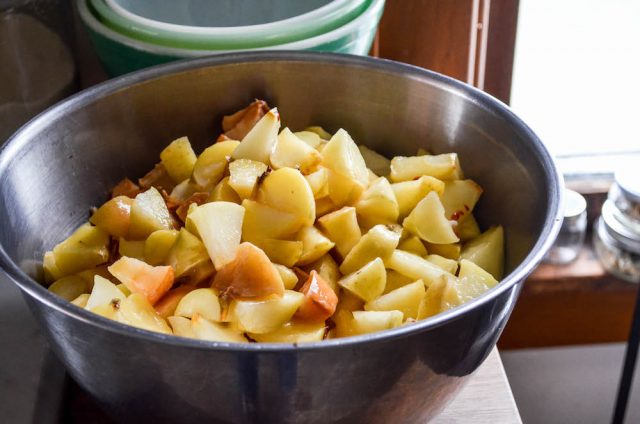
I know, so many apple bits to discard. I tossed mine in the compost after tasting them, and feeling like they’d given up all they had to offer.
I’d normally wait to see this experiment through, but I thought it might be fun for us to take this journey together. Everyone’s Instagram feed seems to be filled with lots of apples from weekend picking, so I figured a few of you might be looking for something beyond apple pie to make (not that there’s anything wrong with pie).
I’ll be sure to come back and update this post as my vinegar continues to ferment. Call me crazy, but I think this could be a very cool homemade holiday gift (plus super easy & inexpensive). Maybe I should get another batch going…
Here’s to a peace-filled week. xx-Jennie
Nine Years Ago: Bourbon Brown Butter Banana Bread, Oven Dried Potato & Apple Chips, Sweet Potato, Ricotta & Leek Souffle
Eight Years Ago: Homemade Creamed Corn, Pear & Ricotta Crepes
Seven Years Ago: Apple Allspice Muffins, Hearty Vegetarian French Onion Soup, to have and to hold (day 68), Love is Strange
Six Years Ago: Brown Butter Pumpkin Seed Cookies, Love and Marriage
Five Years Ago: Pumpkin Scones, Spinach & Pecorino Latkes, Creamy Turnip Soup, Carrot Persimmon Cake
Four Years Ago: Turmeric Tea, Black & White Cookies, Mascarpone & Ricotta Cannoli
Three Years Ago: Wilted Kale Salad & Shallot Vinaigrette, Grain-Free Chocolate Chip Cookies
Two Years Ago: Homemade Vegan Parmesan Cheese, Twix Brownies, Maple Cream Cheese Frosting, Healing Broth
One Year Ago: Homemade Buckwheat English Muffins, How to Make A Flax Egg, How to Make Fire Cider
This recipe is now part of my new site, Simmering. It can be found here.

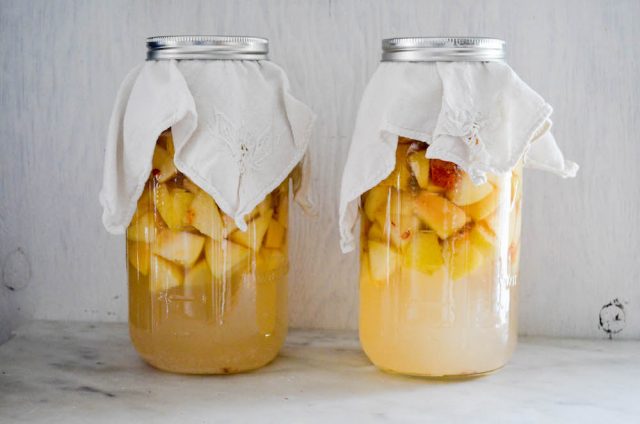
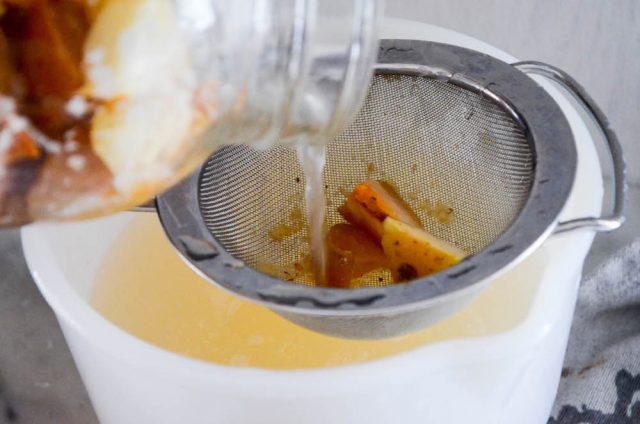
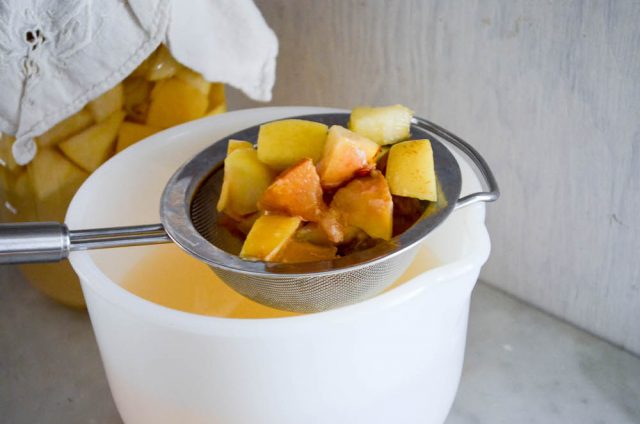
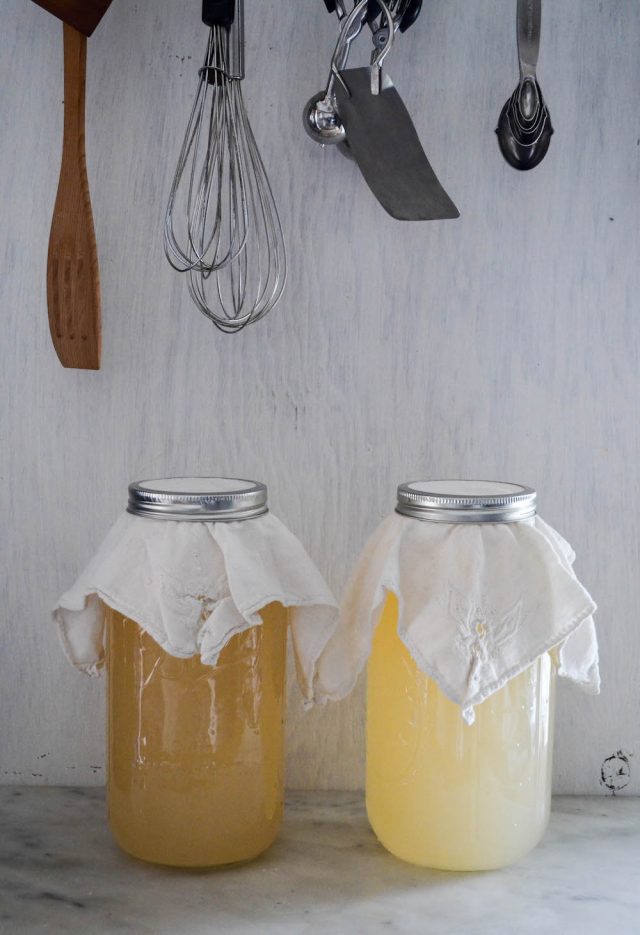
Marla
You are so clever and inventive!
monsoonmiss
Ooh, this absolutely looks like something I need to try this autumn! Thanks for the head’s up, Jennie. I have a friend I think I could impress by gifting them a bottle of ACV I made myself !
Heidi
I’m going to try this! I tried making red wine vinegar years ago with leftover bits of red wine to no success but this I think I can do. You don’t need a mother to get it going?
Jennie
No, in fact it develops a mother. -Jennie
Heidi
Ok…more questions. I made this and bottled it a couple weeks ago and the flavor is right. But mine isn’t red like your pictures on IG. Did I do something wrong or does it depend on the type/color of apples you use? Also, how do you store it? I have it in my cupboards but since it is raw does it need to be refrigerated? One final question – what will the mother look like? I had residue and floaties but nothing looking like what I think a mother should. Sorry for all the questions and thanks!
Jennie
Hi Heidi. My vinegar is actually a deep amber color, not red. The color changes the longer it ferments. Vinegar is stored at room temperature. The mother will look similar to a scoby found in kombucha making (do a google search for reference, but I will try upload a photo from mine when I have time, too). You’ll also have some particles that look like sediment at the bottom of the jar.